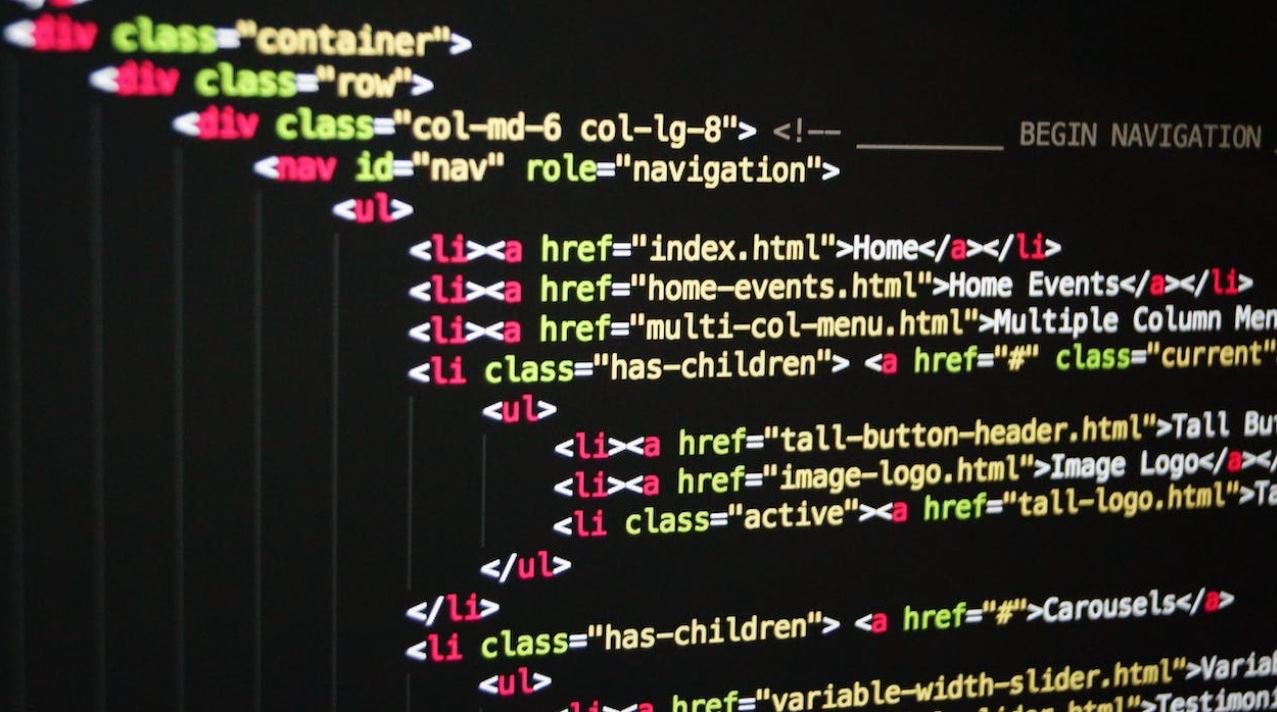AI Social Media Bots
Social media has become an integral part of our daily lives, and with more than 3.6 billion people using social media worldwide, it has also become a powerful marketing tool for businesses. To optimize their social media presence and engage with users effectively, businesses are turning to AI social media bots. These bots use artificial intelligence algorithms to automate various tasks, including content creation, customer support, and social media management. In this article, we will explore the capabilities of AI social media bots and their role in driving business success.
Key Takeaways
- AI social media bots are powered by artificial intelligence algorithms and automate various tasks on social media platforms.
- These bots can create and schedule content, engage with users, handle customer support, and analyze social media data.
- AI social media bots help businesses save time and resources, improve customer satisfaction, and boost engagement and conversions.
1. **Content Creation and Scheduling:** AI social media bots have the ability to create compelling and relevant content by analyzing user data and using natural language processing algorithms. They can also schedule posts at the optimal times for maximum reach and engagement.
2. **User Engagement:** These bots are designed to interact with users by replying to comments, answering queries, and engaging in conversations. By providing quick and personalized responses, they enhance the overall user experience on social media platforms.
3. **Customer Support:** AI social media bots can handle customer support tasks by automatically addressing common queries and providing relevant information. This feature helps businesses improve response times and provide 24/7 support to their customers.
4. **Data Analysis:** By analyzing social media data, AI social media bots can provide valuable insights and feedback to businesses. They can track engagement metrics, identify trends, and measure the effectiveness of social media campaigns.
5. **Cost and Time Savings:** Utilizing AI social media bots can significantly reduce the time and resources required for social media management tasks. Businesses can automate repetitive processes while still ensuring a high level of engagement and customer satisfaction.
6. **Improved Conversion Rates:** AI social media bots can help businesses drive more conversions by engaging users at key touchpoints in the customer journey. Through personalized recommendations and targeted messaging, these bots can effectively influence consumer decisions.
The Impact of AI Social Media Bots
AI social media bots have revolutionized the way businesses approach social media marketing. Their ability to automate tasks, respond quickly to user inquiries, and analyze data has made them invaluable tools for businesses of all sizes. Through their implementation, businesses have seen significant improvements in *customer satisfaction* and *engagement rates*, which directly translate to increased brand loyalty and sales.
Table 1: Comparison of Manual Social Media Management vs. AI Social Media Bots
| Manual Social Media Management | AI Social Media Bots | |
|---|---|---|
| Content Creation | Time-consuming and requires manual effort | Automated content creation based on user data |
| User Engagement | Response time depends on human availability | Instant and personalized responses |
| Customer Support | Limited availability during business hours | 24/7 support with quick responses |
| Analytics | Manual data analysis and reporting | Automated data analysis with real-time insights |
Table 2: Benefits of Implementing AI Social Media Bots
| Benefits | |
|---|---|
| Time Savings | Reduce time spent on social media management tasks |
| Cost Savings | Lower resource requirements for social media management |
| Improved User Experience | Enhance engagement and provide quick support |
| Data-driven Insights | Obtain valuable feedback and measure campaign success |
Overall, businesses that leverage AI social media bots gain a competitive edge in the digital landscape. These bots provide an efficient and effective way to manage social media platforms, engage with users, and drive business growth. As technology continues to advance, AI social media bots will play an increasingly vital role in shaping the future of social media marketing.

Common Misconceptions
AI Social Media Bots are always malicious
One common misconception people have about AI social media bots is that they are always malicious. However, this is not true. While it is true that some malicious bots exist, AI social media bots can also be programmed to perform various helpful tasks, such as automated customer support or content curation.
- AI social media bots can be programmed to deliver personalized customer support 24/7.
- Many AI social media bots are designed to identify and filter out spam or inappropriate content.
- Some AI social media bots specialize in curating relevant content and providing personalized recommendations to users.
AI social media bots always spread fake news
Another misconception is that AI social media bots are solely responsible for spreading fake news. While bots can indeed propagate false information, it is important to note that humans are often the ones behind the creation and dissemination of fake news. AI social media bots can be programmed to detect and flag misinformation, helping in the fight against fake news.
- AI social media bots can utilize natural language processing to analyze the credibility of news articles.
- Bots can identify patterns and inconsistencies in information, flagging potential fake news.
- Advanced AI algorithms can help classify news sources and provide users with reliable information.
AI social media bots are indistinguishable from real users
Many people believe that AI social media bots are so advanced that they are indistinguishable from real users. While AI has made significant progress in mimicking human-like behavior, it is still possible to identify many AI bots. AI social media bots usually follow certain patterns that can help differentiate them from genuine users.
- AI social media bots often exhibit repetitive behavior, such as liking or sharing content at regular intervals.
- Some bots may have generic profile pictures or profile information that lacks personal details.
- Bots generally have high activity levels without showing typical signs of user fatigue.
AI social media bots will replace human moderators
Contrary to popular belief, AI social media bots are not intended to replace human moderators entirely. While bots can assist and automate certain moderation tasks, human moderators are still necessary to handle complex situations and make subjective judgments that AI may struggle with.
- Human moderators bring context, cultural understanding, and empathy to moderation decisions.
- Bots can be effective in flagging and removing explicit or obvious violations of community guidelines.
- People can appeal moderation decisions made by bots, and human moderators can review and make adjustments if necessary.
AI social media bots always have malicious intents
Lastly, it is important to understand that not all AI social media bots have malicious intentions. While there have been cases of AI bots being used for spamming, spreading misinformation, or manipulating public opinion, many bots are developed with positive purposes in mind, such as enhancing user experience, providing efficient customer support, or promoting relevant content.
- AI social media bots can improve response times by providing instant assistance to users.
- Many bots are programmed to generate and share valuable content, fostering engagement and knowledge-sharing.
- Bots can assist in gathering and analyzing public sentiment, helping companies understand their audiences better.

Facebook Users by Country
According to recent data, here is an overview of the number of Facebook users in various countries as of 2021.
| Country | Number of Users (in millions) |
|---|---|
| United States | 244 |
| India | 340 |
| Brazil | 140 |
| Indonesia | 136 |
| Mexico | 80 |
Twitter Engagement Rates
This table showcases the average engagement rates (in percentage) on Twitter based on different content types.
| Content Type | Engagement Rate |
|---|---|
| Images | 0.87% |
| Videos | 1.53% |
| Text-only Tweets | 0.34% |
| Links | 0.65% |
Instagram User Demographics
Here are the demographics of Instagram users worldwide:
| Age Group | Percentage |
|---|---|
| 13-17 years | 23% |
| 18-24 years | 33% |
| 25-34 years | 35% |
| 35-44 years | 20% |
LinkedIn User Growth
This table illustrates the user growth of LinkedIn over the past five years.
| Year | Number of Users (in millions) |
|---|---|
| 2017 | 227 |
| 2018 | 303 |
| 2019 | 470 |
| 2020 | 675 |
| 2021 | 774 |
YouTube Video Length vs. Views
Here’s a breakdown of the relationship between video length and average YouTube views.
| Video Length (minutes) | Average Views (in millions) |
|---|---|
| 0-5 | 3.2 |
| 5-10 | 4.8 |
| 10-30 | 6.7 |
| 30-60 | 9.1 |
Top Social Media Platforms
This table presents the most popular social media platforms globally in terms of active users.
| Platform | Active Users (in billions) |
|---|---|
| 2.8 | |
| YouTube | 2.3 |
| 2.0 | |
| 1.2 |
Social Media Ad Spending
Here are the estimated social media ad spending figures for 2021.
| Platform | Ad Spending (in billions) |
|---|---|
| 48.49 | |
| 2.95 | |
| 1.58 | |
| 23.67 |
WhatsApp Usage
This table shows the number of WhatsApp messages sent per day.
| Date | Number of Messages Sent (in billions) |
|---|---|
| August 2020 | 100 |
| October 2020 | 120 |
| February 2021 | 140 |
Social Media Usage by Age Group
This table depicts the percentage of people in different age groups who use social media.
| Age Group | Percentage |
|---|---|
| 18-24 years | 98% |
| 25-34 years | 94% |
| 35-44 years | 85% |
| 45-54 years | 73% |
AI social media bots have undoubtedly revolutionized the landscape of online interactions. As the data indicates, Facebook dominates the social media realm, with over 2.8 billion active users. Additionally, Twitter engagement rates vary depending on content type, with videos yielding higher rates compared to text-only tweets. Instagram appeals to a wide range of age groups, with the majority of users falling within the 18-34 age range. LinkedIn has shown impressive user growth, surpassing 774 million users in 2021. The length of YouTube videos also affects viewer engagement, as longer videos tend to accumulate more views. Facebook, YouTube, and WhatsApp take the lead in terms of active users, while Facebook remains a dominant force in social media ad spending. The popularity of WhatsApp is reflected in the billions of messages sent daily on the platform. Furthermore, social media usage remains prevalent across different age groups, with the younger demographics exhibiting the highest levels of engagement.
AI Social Media Bots – Frequently Asked Questions
What are AI social media bots?
AI social media bots are specific programs or algorithms powered by artificial intelligence that automate certain tasks on social media platforms.
How do AI social media bots work?
AI social media bots leverage machine learning and natural language processing techniques to analyze and understand user queries, generate responses, and perform actions based on predefined rules or learned behavior.
What kind of tasks can AI social media bots perform?
AI social media bots can perform various tasks such as answering user queries, providing customer support, moderating content, generating automated responses, analyzing data, and scheduling posts.
Can AI social media bots understand human emotions and context?
Some advanced AI social media bots are capable of understanding human emotions and context to a certain extent, thanks to advancements in sentiment analysis and contextual understanding algorithms. However, they may not always accurately interpret complex emotions or fully grasp nuanced conversations.
Are AI social media bots always reliable?
While AI social media bots can be highly efficient and effective, their reliability depends on various factors including the quality of training data, the complexity of tasks, and the accuracy of algorithms. In some cases, they may produce inaccurate or inappropriate responses.
Can AI social media bots replace human interaction on social media?
AI social media bots can complement human interaction on social media platforms by automating certain tasks and providing quick responses. However, they cannot fully replace human interaction as they may lack empathy and creativity that humans possess.
How are AI social media bots regulated to prevent misuse?
The use of AI social media bots is subject to regulations set by social media platforms and local jurisdictions. Companies deploying such bots must ensure compliance with privacy, data protection, and anti-spam laws, and monitor bots to prevent malicious activities or unethical behaviors.
What are the benefits of using AI social media bots?
AI social media bots offer numerous benefits, including improved customer service, increased responsiveness, faster resolution of queries, 24/7 availability, reduced workload for human teams, and data-driven insights for better decision-making in social media marketing.
What are some limitations of AI social media bots?
Some limitations of AI social media bots include the potential for generating inappropriate or offensive content, inability to understand complex queries, dependency on training data quality, inability to handle unpredictable scenarios, and the lack of human touch in interactions.
Can AI social media bots learn from user interactions?
Yes, AI social media bots can learn from user interactions to improve their performance and accuracy over time. They can adapt their responses and behavior based on user feedback and by continuously analyzing data patterns.




